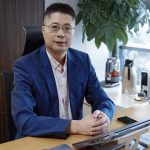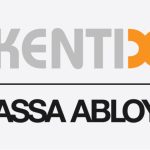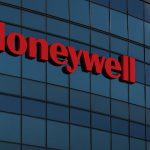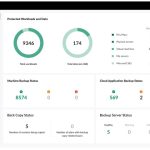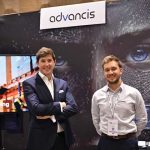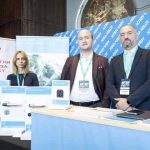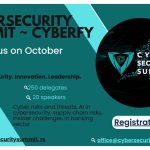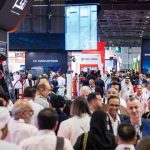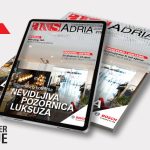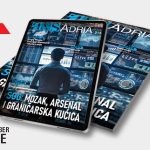Interview: Yelin Jiang, CEO of Hytera Communications
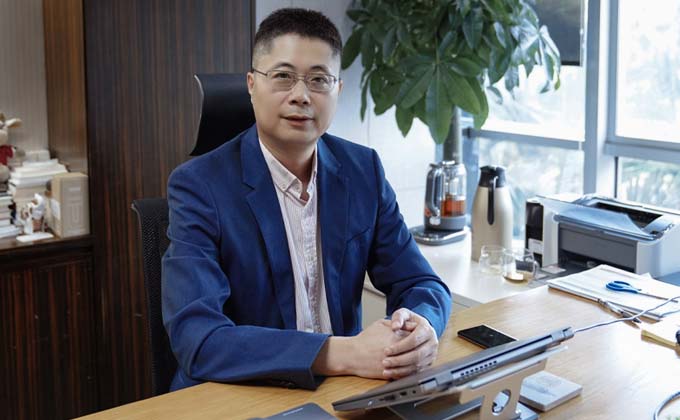
By: Damir Muharemovic
E-mail: editorial@asadria.com
a&s Adria: Could you briefly introduce yourself, focusing on your current role and professional background?
Jiang: I am Yelin Jiang, CEO of Hytera Communications. I have 15 years of technical experience in telecommunications. I joined Hytera in 2010, as the Head of Product Development. Since 2021, I work as a CEO. Over the past four years, I am pleased with the company’s transformation – Hytera is now more process-driven, better organized, and equipped with cutting-edge technology and innovative solutions. Additionally, our sales team has grown significantly stronger and more active in the global market.
a&s Adria: At the recent Hytera Global Partner Summit in Croatia, you mentioned that the company has successfully navigated major challenges such as the pandemic, political tensions, and global supply chain disruptions, while also expanding its presence in the European market. Could you elaborate on how Hytera managed to overcome these obstacles and what specific strategies or factors contributed to gaining a stronger market share in Europe?
Jiang: Hytera has operated in Europe for over 20 years. When China and Europe had a good relationship, the atmosphere for business was completely different. And so, we did a lot of acquisitions in Europe. We acquired Rohde & Schwarz‘sTETRA business in 2012, now it is restructured as HMF. Later on, we acquired Sepura and Teltronic. Our DMR and analog radio channel business also grew steadily.
However, geopolitical shifts raised uncertainty about Chinese technology – particularly whether the Chinese telecommunication and radio communication technologies are safe or secure. Of course, all these concerns were created by politicians, they are not true. But, this made it a bit difficult for us to continue doing business on a higher level, like governments, public safety, and some key infrastructure businesses.
So, we modified our strategy in Europe. We were more focused on the commercial market. And we left this kind of government-related business to HMF, Sepura, and Teltronic. Then Hytera focused on commercial markets and channel business in Europe. We reinvested a lot in channel business and opened a new office in Pulheim of Germany, where we have a new facility, a warehouse, and a new team to support the European customers, especially after Brexit. So, in this way, Hytera was adapted to the new business environment.
Then came the pandemic, which created lockdowns and a lot of delays in delivery. But the good thing is, for Hytera, we have a very strong R&D team. The Chinese engineers are very diligent, they worked very hard. We made retrofit replacements of obsolete components in a very short time. This strong R&D effort helped us a lot, our business grew very quickly during the pandemic period.
Today, we nearly doubled our channel business compared to five years ago. In the past three years, we also made around 19% growth. I think the first reason behind this is Hytera has a very strong R&D team that helps Hytera continuously supply the market. The second, we enhanced our investment in Europe, we provided better delivery, better service and better marketing positioning in the market.
And the third thing is our continuous investment and sustainable commitment to the market. Our partners see our investments and our good products. So, putting all these things together – we gain more and more trust from customers. More and more partners who used to work with our competitors now want to talk to us, join us and develop the business together.
a&s Adria: What signal did you want to send to your customers and partners by organizing the first European Hytera Summit?
Jiang: Firstly, we wanted to reaffirm our commitment to European markets, Hytera is investing and growing here. We are confident in our ability to grow, and we look forward to growing together with our partners and customers. Secondly, we wanted to take this opportunity to showcase our innovative products and solutions, enabling a better understanding of Hytera technologies for our partners – then they can learn something new and reach out to us for future collaboration. Lastly, and this is important – we particularly chose to hold this event in Croatia. We believe we have a good opportunity to continue growing – not only in the channel business but also in public safety and other major verticals. We wanted to send a message to our customers and partners in this region that we are committed to further investment and collaboration here.
a&s Adria: I presume, you plan to increase the number of local people in Europe as well?
Jiang: People are important; so is experience. We need talent experienced in high-end solutions, government processes, and public safety requirements – not just channel operations.
a&s Adria: How do you balance between developed and emerging markets? And local or regional regulations, like the GDPR?
Jiang: You are right. There are two kinds of markets. For the developed markets, we are more willing to listen to the customers, to understand their demand, delivering the best solution which can fit their needs. We can even make adaptations to those markets – like in Europe, where you need GDPR compliance and follow some other regulations. Because the customers are already experienced with the business, they already have a lot of ideas, and they just don’t know who can help them to implement the projects.
As for the emerging markets, it’s a bit different, because the society, the government, customers, police, utilities – are not so efficient and well-organized. They need not only technology, but also the ideas behind the technology – how to properly use the technology. We need to make use of the experience we get from developed markets, sharing the experience with the customers in emerging markets, telling them why they need a certain technology or product, and how they can put the technology in place to improve their efficiency and daily operations, proving that it’s a different idea and concept. So, in the emerging markets, sometimes we need to do coaching, from technical solution design to tendering and implementation. And afterwards, we still need to train the customers how to utilize the products. So it’s a different route comparing with the methodology we used for developed markets, but it’s very interesting.
a&s Adria: What unique strengths or capabilities distinguish you in the market?
Jiang: We believe we have some unique advantages comparing with our competitors. First of all, we are a Chinese company, we are much more flexible in terms of product development and customization. We can adapt our product solutions to fit customer’s needs.
Secondly, we focus on TETRA and DMR technologies, while our competitors may treat these technologies as outdated and not worthy for further investment. We offer a comprehensive product portfolio, and we bring new products to the market that excites our customers and partners every year, which helps energize the industry. Thirdly, the telecommunications and IT industries in China are booming. Backed by robust supply chains and advanced technology, Chinese companies are very agile. This story also applies to Hytera’s fast evolution in broadband. We can access broadband technologies and components rapidly, enabling a greater competitiveness on us over the U.S. and Europe companies.
a&s Adria: Could you walk us through the Hytera core technologies and key products? What are Hytera’s flagship products, and in which industries or vertical markets are they most widely used?
Jiang: Hytera has been serving worldwide users from Public Safety, Oil and Gas, Mining, Utilities and Transportation industries over three decades with its innovative portfolio of Two-way Radios, PMR-LTE Convergent Communications, Fast Deployment Communications, Body-worn Camera and Control Room.
a&s Adria: Hytera has introduced an impressive number of new products over the past couple of years, spanning both narrowband and broadband segments. Could you walk us through the most significant innovations across these areas – from PoC and TETRA solutions to your latest broadband devices, Body-worn cameras, and private 5G infrastructure?
Jiang: Yes, we have launched 71 new products in the last three years, of which 33 are from the narrowband and 38 are from the broadband, confirming our position as a technology leader in the PMR industry. In the retail sector, Hytera has successfully entered this previously unexplored niche market with new S1 units – including S1 Mini, S1, and S1 Pro. PoC (Push-to-Talk over Cellular) solutions gained new growing momentum with the launch of P50, this new entry-level model has an exceptional positive feedback in the market.
In terms of TETRA, we released a number of outstanding models including PT590, a high-end model for public safety users, and the intrinsically safe two-way radio PT890Ex for Oil & Gas users. While in digital systems, the new generation of DMR Cube base station DS-6250S has been recorded installation of more than 4000BTS by the delivery of Chinese Emergency Response project, which is riding the tide of establishing nationwide PPDR network in China.
Epack ad-hoc repeater solution, which is designed for fire and rescue services, land border and sea border protection, got significant improvement in capacity in its latest version. Hytera presented the latest AI-powered 5G cameras SC880 and GC550 further expanding the portfolio of Body-worn Camera, which represents part of Hytera’s strategic expansion into the surveillance market.
Broadband communications are experiencing strong growth from device to system, sales of PNC4, PNC5, PNC6 series and PDC series are increasing; tens of thousands of base stations are being delivered to China and overseas markets, making Hytera as one of the key Chinese suppliers for broadband base stations. Additionally, Hytera is developing its own private 5G systems utilizing its third generation of broadband technology. Finally, we have announced the advanced Hytera Secure Efficient Intelligent System (HySEIS) platform – a multimedia laboratory based on artificial intelligence that integrates security, communications, energy, LBS, and management functions for the needs of different verticals.
a&s Adria: Can you give me an example of the implementation of AI in your products?
Jiang: When we talk about AI, we will focus on two areas. On one hand, how we can use AI technology to ensure our products and solutions can help our customers with their daily operations in different verticals like public safety, utilities, or manufacturing. On the other hand, how to utilize AI to improve our internal efficiency, which means using AI for things like product design, coding, internal processes, and testing. This is what we are doing so far.
a&s Adria: Which technology do you believe will be the most important for high-tier customers in the near future?
Jiang: One is the sort of narrowband technology, like today’s DMR or TETRA. This will continue for the next 10 years at least. It is a technology we cannot overlook. We will continue to enhance, innovate and upgrade the technology. Another is broadband-related technologies like PoC, Body-worn cameras, and associated applications. This is really important. If broadband technology is not well built up, then there’s no base for AI and such new things to be built on top. So, it is very important to continue promoting broadband-related technology to customers and to the market, and to polish and continuously innovate to ensure we have the best products and best solutions for the market.
a&s Adria: And where do you see Hytera in terms of that technology development and market penetration?
Jiang: I’m very confident that in the next three to five years we will maintain our growing momentum. We see opportunities, we gain attention, trust, and cooperation all over the world. And I am also confident in our current product and technology strategy. We are on the right track with narrowband and broadband convergence, and we cover end-to-end solutions from terminal to infrastructure to application and command & control. Also, we are adding new technologies like AI to our industry.
We believe that keeping today’s product portfolio – narrowband and broadband convergence solutions in hand – together with more AI-related technologies in the next two or three years, it will help not only Hytera to provide more sophisticated application solutions to the market, but also boost the PMR industry, because our customers really need software, hardware, and solutions to facilitate their business.
a&s Adria: Is that a requirement from the customers?
Jiang: Yes, it’s obvious – from the government, police, public safety, and utility sectors – they’re all talking about how to combine new solutions with AI. We’ve also received positive feedback from Southeast Asia and Latin America. People understand that we’re talking about something interesting and they are willing to see what are we going to do.





